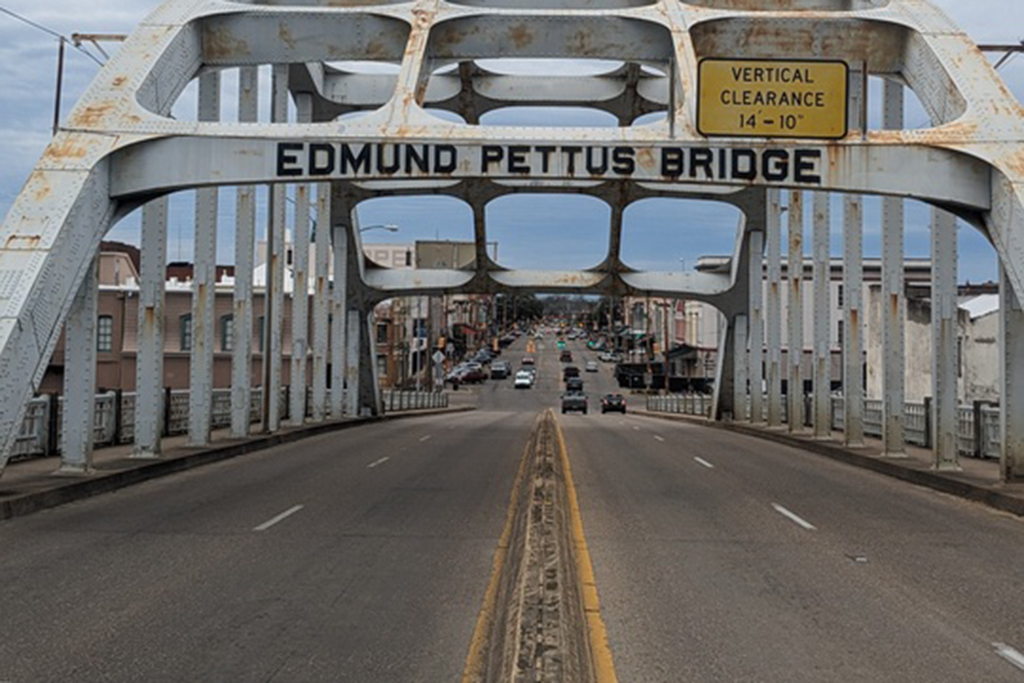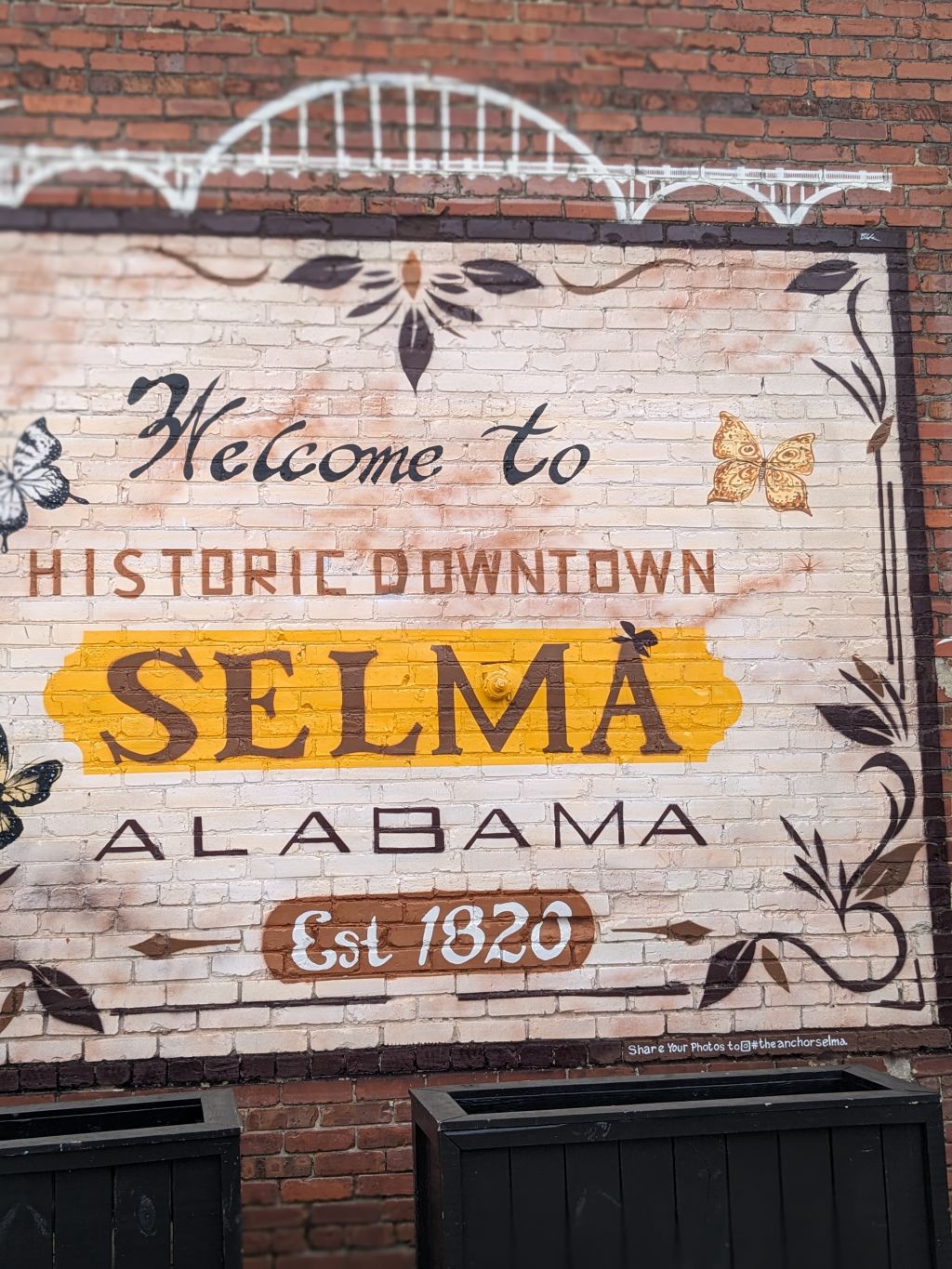Beyond The Bridge

Source: Tory Russell
When you hear the words “Bloody Sunday,” what comes to mind? Most likely, Dr. Martin Luther King, voting rights and a nonviolent march turned violent by white racist cops riding on horses beating marchers, right? And you would be so close and yet so far away from not only what happened but also what Bloody Sunday was really about for those involved before the marches.
I’m glad I went to Selma to cover the 59th commemoration because even I didn’t know the half. But now we all will. Our week-long trip emerged as a week-long history course that should be mandatory in schools across this nation. But, you know, racist gone racist.
MORE: ‘Bloody Sunday’: Commemorating The Selma To Montgomery Marches From 59 Years Ago
After a long road trip, we pulled right into Selma, Alabama, and the first thing you’re greeted with is the Edmond Pettis Bridge, the historic location for Bloody Sunday. At the foot of the bridge is a “Welcome to Selma” sign flanked by other Black movement cornerstones like the National Voting Rights Museum and Institute and the Civil Rights Memorial Park, where there are pictures and information that you can only find here.
We drove slowly into downtown where everyone was waiting on “The Jubilee,” which commemorates the Bloody Sunday anniversary.
How did the ball get dropped for two consecutive generations to sustain a movement?
We followed Alabama State University professor and movement scholar Dr. Robert White and Pan-African educator and author Obi Egbuna Jr. the entire time, which gave us unlimited access to events like a mock trial facilitated by Black youth from Selma High School and teach-ins at area high schools, providing valuable insight from the people involved nearly 60 years ago.
We met elders who were just youth back then but had their memory and passion still intact. One who stood out was Dr. Mae Christian, who organized before, during and after Bloody Sunday all the way to the White House lawn in civil disobedience protests for rights in the late 1960s.
“Go beyond the bridge and you’ll still see a Selma that needs a movement,” Dr. Christian told us. So we did. And what we found was that Selma was and is much more than just Bloody Sunday. Selma’s issues extend way beyond voting rights and desegregation. Their issues are the same issues that plague many Black people located in cities and towns across the U.S.
We all know that the South is poor with poverty reports ranking Alabama the sixth poorest state in the country while also listing Selma as the nation’s ninth poorest city. Just last year, the city of Selma’s unemployment rate was the highest among large cities measured in Alabama. According to a 2018 Alabama Poverty Data Sheet, 35.4% of the people in Selma and Dallas County live in poverty.
We gotta make it count or history and its failures will repeat themselves.
Like many cities’ post-historical activist moments, one question stood out: What investments are made toward the courageous among us who want to become more than just another Negro with a degree and no job prospects in your own town?
Not many I could see.
Some area high schools didn’t have full-time history teachers. In some cases, the Wi-Fi didn’t work because it rained at another high school. Meanwhile, other schools looked like small private college campuses.
The haves and the have-nots haven’t changed. The bridge, the college and many of the institutions are still named after the same racist who we were fighting against before and during Bloody Sunday. And when the cameras leave, the oppression is automated. And now, with A.I., it runs on autopilot. This is why you can’t tell if the damage to the homes is from poverty, poor building materials or the 2023 tornado that ravaged most of the housing developments done by local residents. In Selma, and especially in the city’s George Washington Carver Projects, this devastation seems to be a backlash for even standing up to the powers that be more than 59 years later.
“Go beyond the bridge and you’ll still see a Selma that needs a movement.”
Yes, what we are witnessing in Selma is a result of failed political parties and politicians selling Black people hope in every election cycle but delivering nothing; activists selling their souls for a seat at their oppressor’s table instead of building their own; and a “civil rights movement” that wasn’t coined by anyone in the actual movement instead by their funders. For the movement of this day and age, there are questions like: “How did the ball get dropped for two consecutive generations to sustain a movement?”
Obi Egbuna Jr., the Pan-African author and scholar, has a lot of viral quotes and videos both in-person and online. But the one that stands out and hits home for me and the movement is this one right here: “You either gone become big funder eligible or revolutionary but you can’t be both.”
And it seems to me that the powers that be have told Selma exactly what they are eligible for — another revolutionary moment that can not only change their world but also the whole world again. This time we gotta make it count or history and its failures will repeat themselves.
Peace and Black Love.
Tory Russell is a Ferguson Uprising Organizer, Internationally recognized Black Movement Leader and Director of Organizing for the International Black Freedom Alliance.
SEE ALSO:
Kamala Harris Calls For Ceasefire In Gaza While Honoring Bloody Sunday’s 59th Anniversary
Bloody Sunday Veteran: ‘We Thought We Were Going To Die That Day’
The post Beyond The Bridge appeared first on NewsOne.





